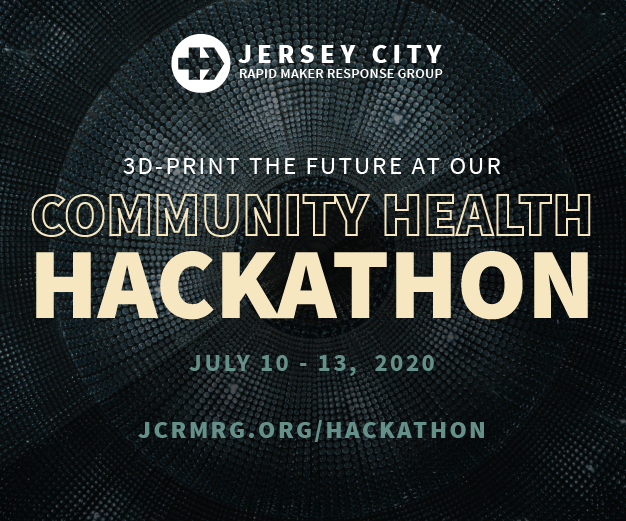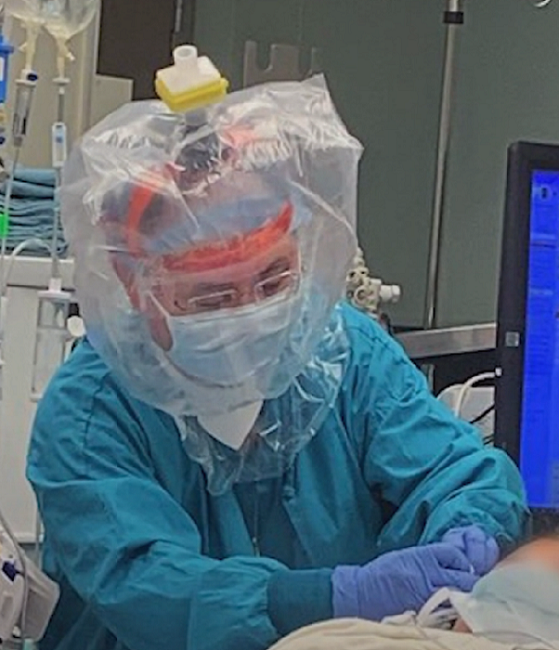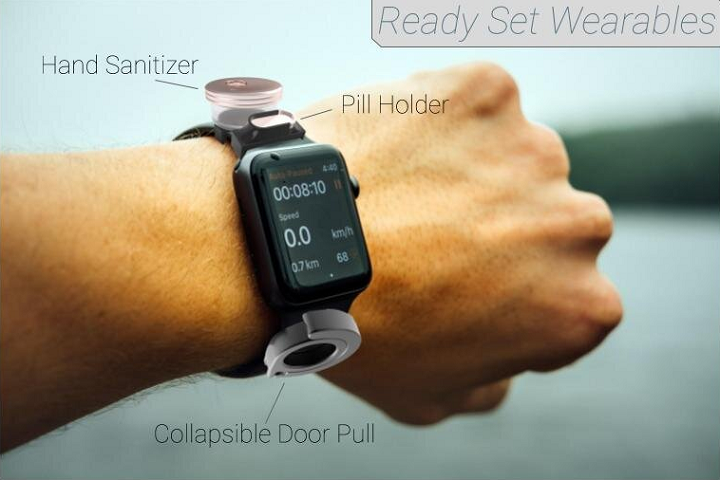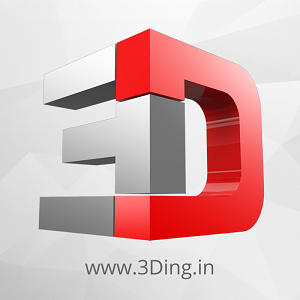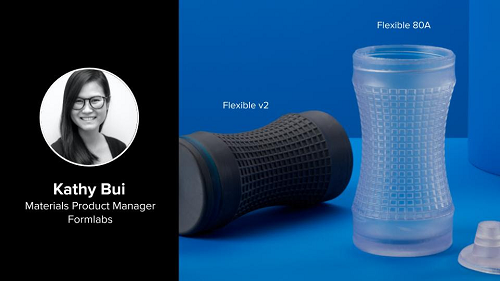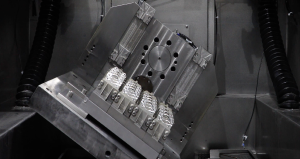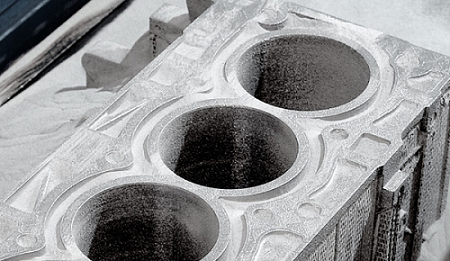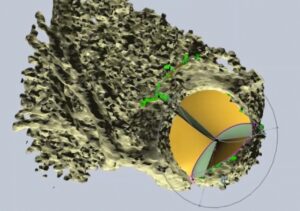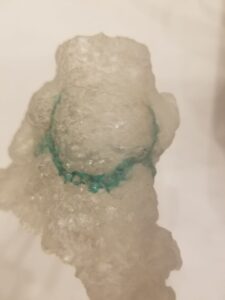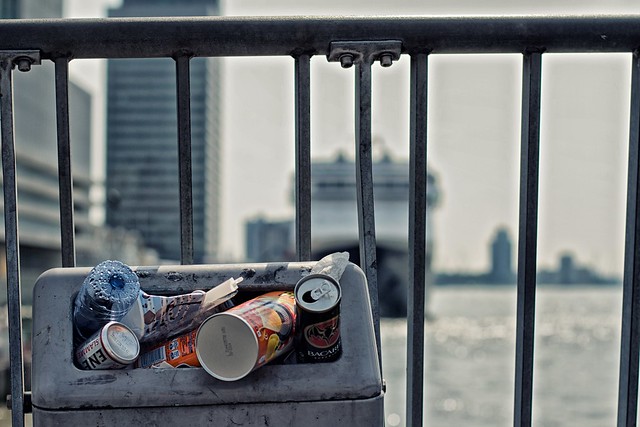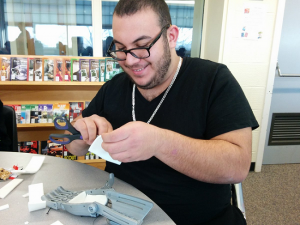The Jersey City Rapid Maker Response Group (JCRMRG), an all-volunteer collective, was founded as the result of a Reddit post calling on 3D printing hobbyists to organize, make, and deliver personal protective equipment (PPE) in the form of 3D printed face shields for medical workers and first responders in New Jersey and New York during the continuing COVID-19 crisis. While the team ended up switching to injection molding to create over 75,000 face shields, which were subsequently donated to healthcare workers all around the US, the JCRMRG recognized the great potential of using 3D printing to help during the pandemic, and launched a virtual nationwide 3D Health Hackathon, with the goal of taking on PPE-related wearability, sustainability, and supply chain issues.
Now, the winners of the hackathon have been announced.
“Hackers came up with solutions to keep people COVID free, and help citizens and businesses adapt to the challenges of the world we all live in,” JCRMRG’s Laura Sankowich told me.
100 hackers from countries all over the world, like India, Mexico, and Nepal, participated in the hackathon, which was supported by a 21-person multidisciplinary mentor team that helped by scrutinizing the functionality of designs and offering support and advice. The hackers ranged from teenage makers and university students to doctors, executives, scientists, and other professionals, with Carnegie Mellon University, Fairfield University, NJIT, NYU, Penn State, Rutgers, and Stevens Institute of Technology represented by teams. The event was sponsored by:
- 3DPrint.com
- Asimov Ventures
- Dassault Systèmes
- DesignPoint
- Devpost
- Indiegrove
- Jersey City Tech Meetup
- PicoSolutions
- PSE&G
- PrusaPrinters
- Stevens Venture Center
- TechUnited
- Women in 3D Printing
There were three hack categories: create methodology for reducing waste in the production process in order to facilitate sustainable PPE; develop modular/mobile manufacturing labs that can be deployed easily in healthcare, emergent, and even educational settings; and design day-to-day PPE, like face shields, that can be used by commuters and at businesses and schools to help resume day-to-day life.
“Our goal is to be responsible partners in the ecosystem that we are currently a part of, while acting as a catalyst for innovation, and we are the only all volunteer PPE group in the country doing an event like this. We want to pay it forward, enable our hackers to walk away with enough feedback and support to launch their own successful ventures that can continue to support the battle against COVID, and combat supply chain disruption through maker-led initiatives,” said JCRMRG founder Justin Handsman.
The team of judges deliberated for three days, and the hackathon winners have been announced. Blizzard Robotics, a high school team out of California made up of Riya Bhatia, Abeer Bajpai, and Peter Xu, came in third place for their versatile door handle attachment, which they dubbed the Armdle. They noticed when visiting hospitals and orthodontists, people had to touch the same door handles when entering and exiting bathrooms inside the facility. If the handles are not properly sanitized, bacteria on one person’s hand can easily be transferred to others when they touch the handle. So they developed the Armdle, a universal door handle attachment that can be placed on the side or top of most door handles to help stop the spread of infection through shared surfaces.
The Armdle concept is simple—a person simply uses their arm to push down, or to the side of, the handle, and when they pull back, the attachment’s raised lip hooks onto their arm, so they can open the door without having to use their hands. The attachment actually forms a kind of platform over the handle, so it works with push-doors as well, since people can push down on the Armdle to open the door. Facilities can use zip ties to attach the Armdle to the door handles, resulting in a quick, inexpensive, safer solution.
Howard Chong, Michael Noes, and Ethan White, or Team Bunny PAPR, came in second place for their user-friendly, scalable, and open source Powered Air Purifying Respirator (PAPR).
Their goal was to help the world get back on its feet, back to work, and back to socializing without distance by addressing the global shortage of N95 equipment, while also keeping essential workers on the front lines of the pandemic safe. Commercial PAPRs cost about $1,000, but the hospital-grade Bunny PAPR is only $30. This PPE solution is not only affordable and easy to sterilize, but it’s also disposable, reusable, and can be made with readily available parts—an FDA-approved viral filter, a disposable bag and USB battery pack, and a laptop/XBox fan. Additional benefits include higher comfort levels, support for those with breathing conditions who can’t wear N95 masks, and compatibility with wearables.
Speaking of wearables, STEM advocates Natasha Dzurny, Casey Walker, and Elizabeth Spencer, who make up the Jersey City team Slice Girls, won first place in the hackathon for their Ready Set Wearables hack, which makes it possible for users to carry essential items, such as a door pull, hand sanitizer, and emergency medication, on their watch, dog leash, shoelaces, a carabiner or wrist band, etc.
The team members worked with CAD software and 3D printed prototypes to figure out their functional yet fashionable designs, which enable users to leave the house with all the COVID-19 essentials without having to carry a purse or bag, or worrying that you left something important at home. For instance, one component is a collapsible door pull, and another watch-friendly accessory is a small clip-on dispenser for hand sanitizer. Finally, the last Ready Set Wearables accessory is a container that allows the wearer to carry a small amount of medication.
“We will reduce anxiety, increase compliance with CDC health regulations, and save lives by slowing the spread of COVID-19,” the Slice Girls state in their video.
Congratulations to all of the hackathon winners!
(Images courtesy of the Jersey City Rapid Maker Response Group)
The post Winners Announced for 3D Health Hackathon to 3D Print PPE to Fight COVID-19 appeared first on 3DPrint.com | The Voice of 3D Printing / Additive Manufacturing.

